Fixing Clogged Wall Weeps in Retaining Walls
We’ve looked at a handful of different retaining walls here on our website. Our company is often building new retaining walls for properties here in Washington DC. Sometimes though instead of rebuilding them, we offer options to preserve them. These retaining walls are often falling apart and sometimes they have types of structural failure. The most common form of this structural failures can be avoided through care and revitalization. The damage often becomes visually apparent in what we call lateral deflection. Lateral deflection is a bowing of a wall. Generally this bowing starts as a slight bulge.
That bulge or any type of shape that’s not straight or planar is lateral deflection. Specifically, we are referring to conditions where the wall has changed shape over time. Other types of walls can be built with an angle or curvature. Particularly though, when the wall changes because of subsidence, especially where it becomes bulging or bowing outwards, that’s normally a type of lateral deflection.
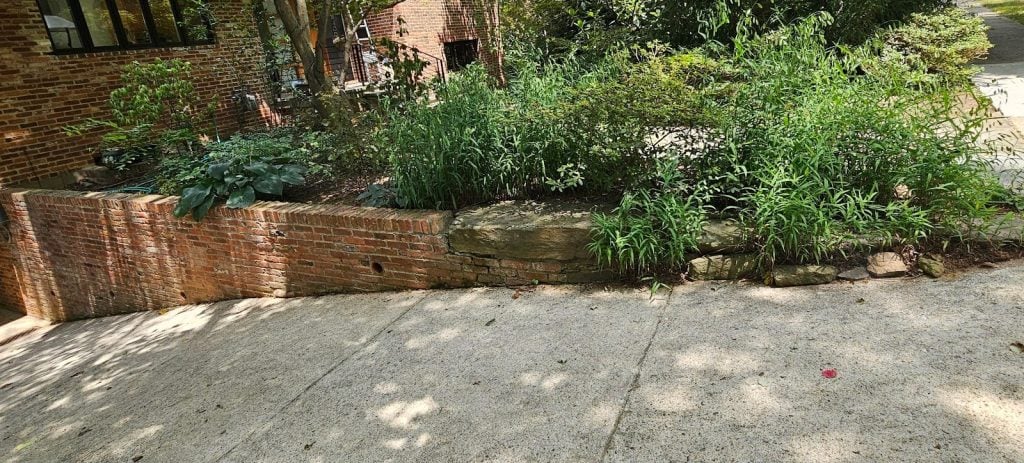
This type of problem, of lateral deflection, can happen both in structural building walls and at walls that are used in retaining walls to hold earth up in a vertical position. When lateral deflection happens in a vertical building wall, the root problem is generally related to a lack of strength to support the load above. These building loads can be part of the live load or the dead load of the building.
The dead load of a building is generally significant. Particularly in historic masonry buildings, these buildings are simply very heavy. The dead load is the weight of the building itself, the material used to build the building. The live load is the weight of the occupants and all of their types of non-afixed movable items.
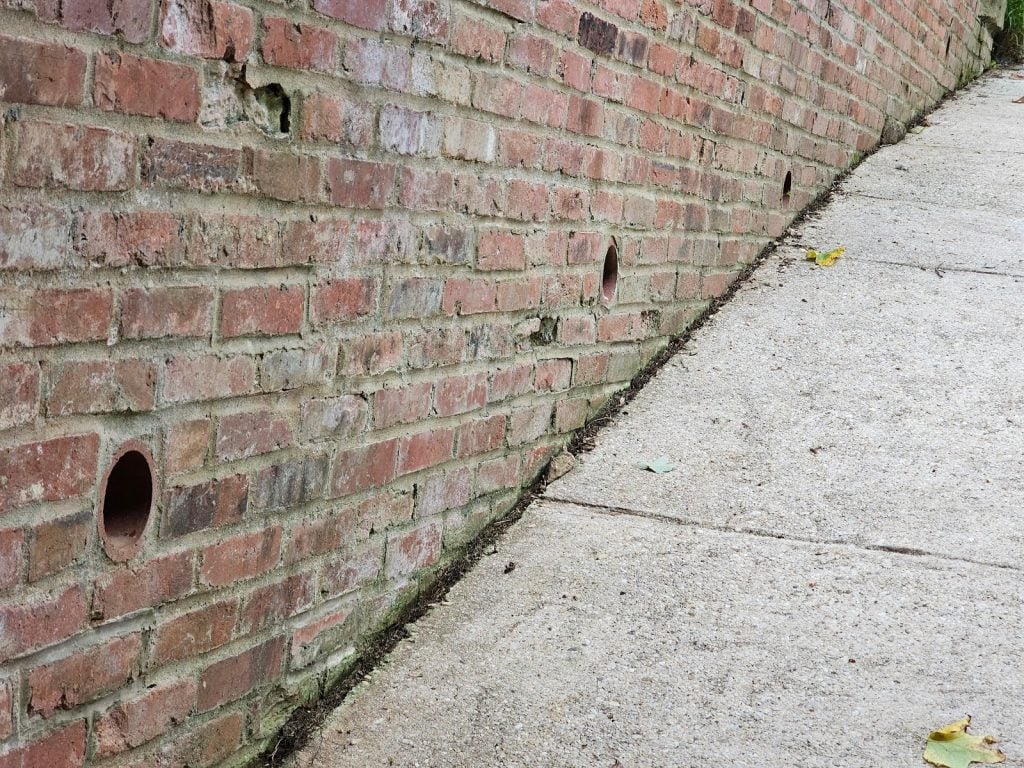
Although, here in DC, historic buildings often have issues of lateral deflection, it’s more common with retaining walls. These retaining walls have the pressure of the earth behind them. When that earth (dirt) becomes significantly hydrated, essentially when the dirt becomes soaked with water, it doesn’t stay in its static form. Instead, the pressure transfers against the wall.
This pressure is always on the upper portion of the wall, the side intended to retain the earth. Over time, the walls begin to sag, and eventually the mortar joints begin to dehydrate from over hydration. Once the joints are deteriorated and once the wall is loaded with hydrostatic pressure, it begins to cause the retaining wall to collapse. These collapses generally don’t happen quickly, sometimes it can take many years.
The picture below shows a terracotta weep filled with gravel. It’s better for the pipe to filled with gravel than earth, but overall it’s better if the pipe is entirely empty and allowing water to flow more freely.
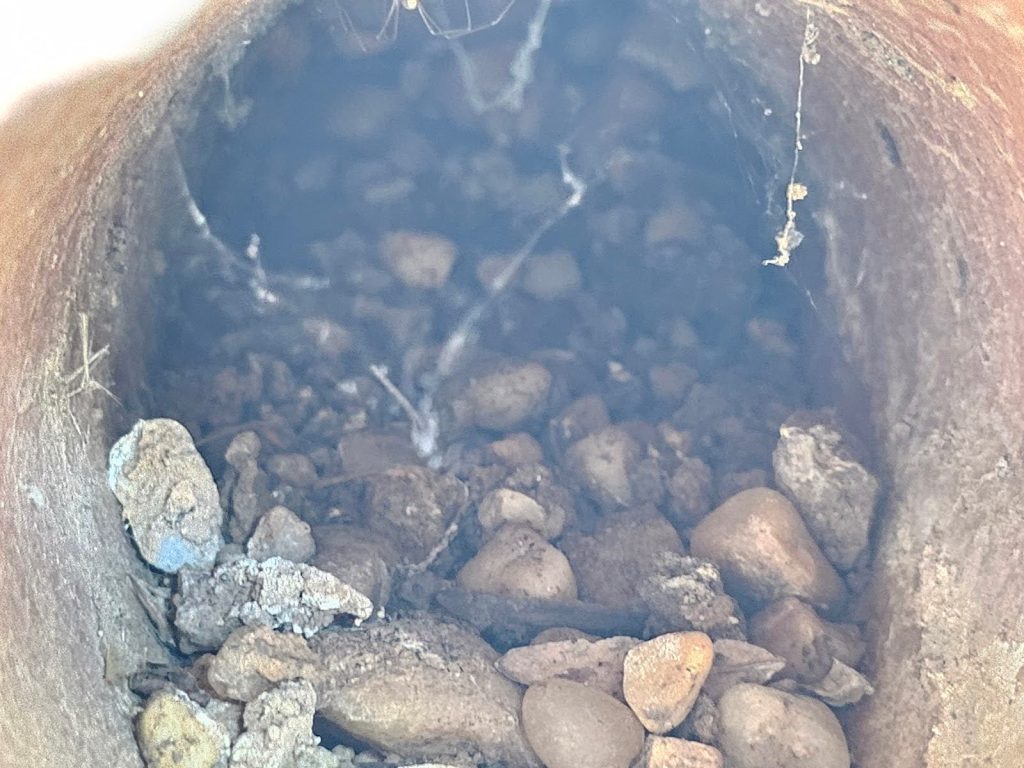
These pipes allow the hydrostatic pressure to relieve itself, essentially allowing it to drain away instead of building up. It’s like a swimming pool with an intentional hole at the side, it can let the water drain away.
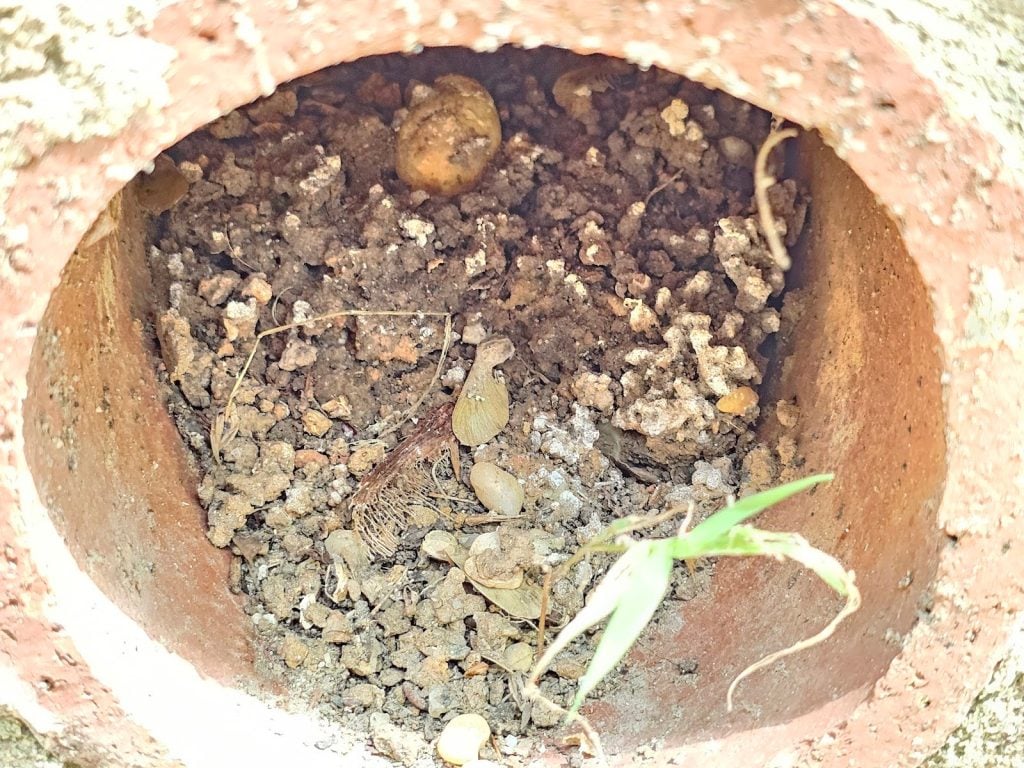
Here in the pictures above and below you can see that these particular pipes are not filled up with just gravel and pebbles, here they actually filled up with dirt. In the picture above there’s even a plant growing in the dirt inside of the pipe.
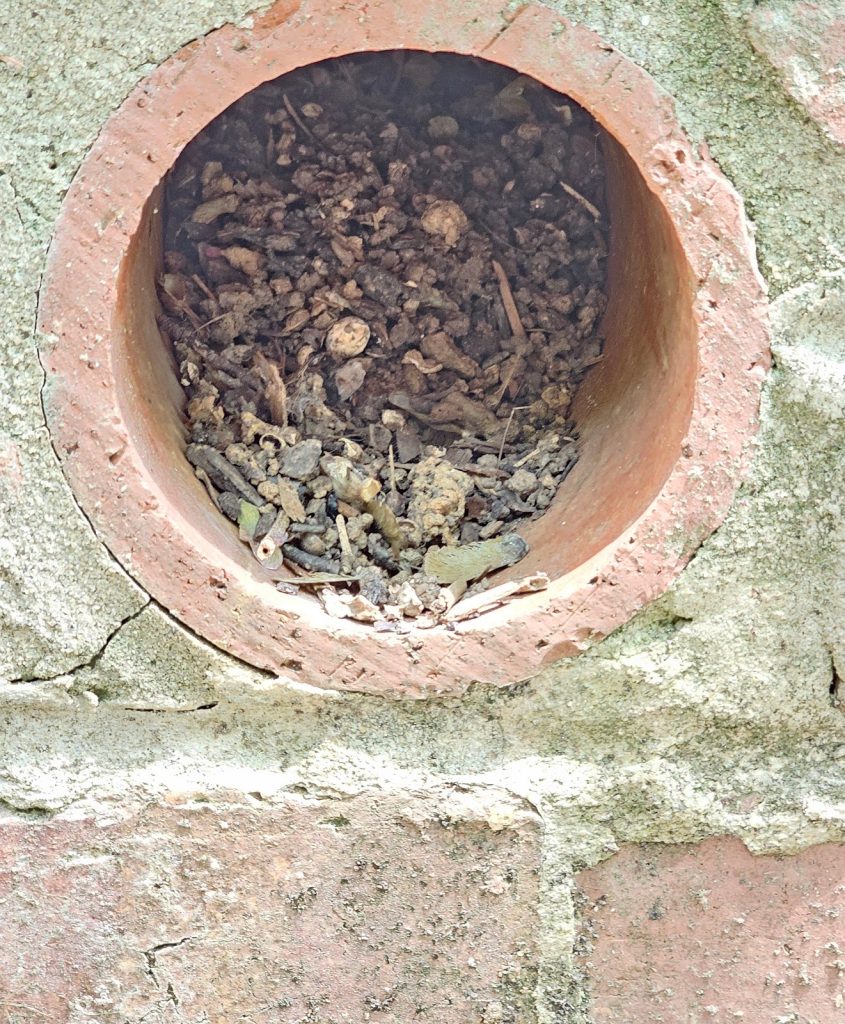
Even when installed in a relatively short retaining wall such as the one shown in the adjacent picture, it can still be helpful to have weeps like this. Where water runs across an urban area, it’s important to be able to relieve this pressure. Without a method of relief, the wall will deteriorate in an accelerated timeline..
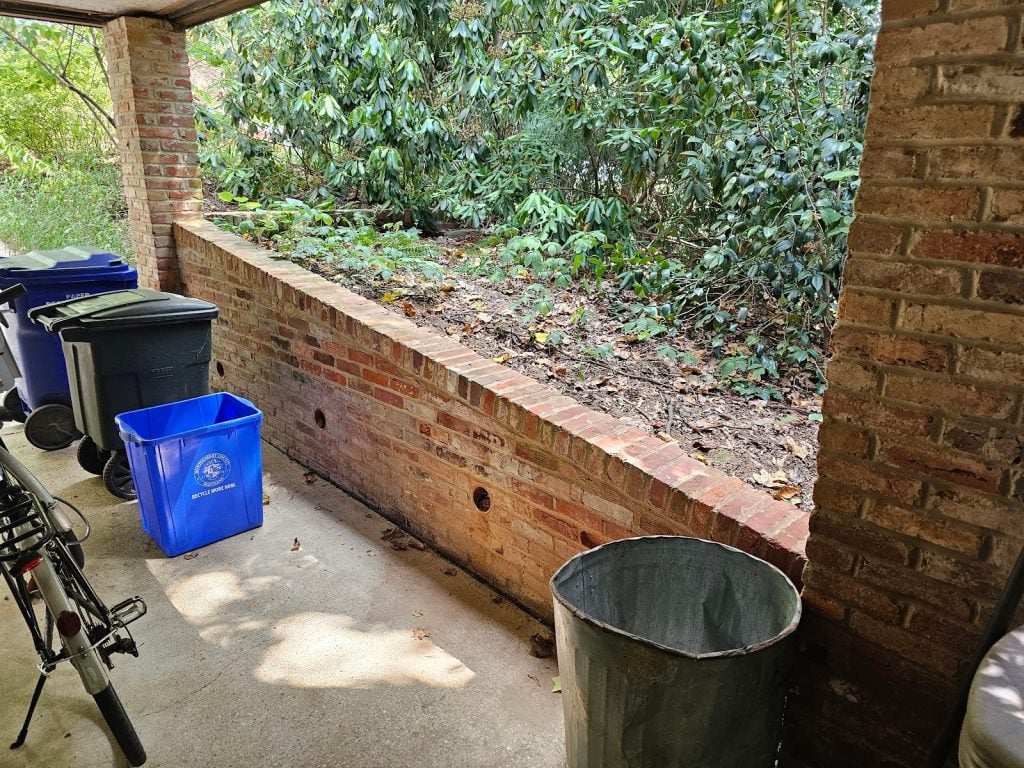
In this coming week we’ll take a look at another construction area where PVC pipes have been installed instead of historic terracotta pipes. The pipes at the wall we’re looking at there are smaller and therefore more prone to clogging. And, in the case of the one we’ll look at this coming week, the wall weeps are filled with plant growth. Like the leaps shown here, they don’t work properly unless well maintained.
As well, in this case, we would really recommend the wall be rebuilt with a perforated modern collection system that runs parallel to the wall itself. That is a significant amount of work though and if things can be done in the midterm to alleviate some of the backup and pressure buildup, it can extend the life of the existing wall.

We can Help
Our company focuses on historic restoration more than modern building upkeep, maintenance, and construction, but our company understands both types of construction very well and a full picture well-rounded approach is needed in any niche in the construction industry. Although we focus on historic restoration, repointing, tuckpointing and historic brick repair, our company also has technical knowledge and competencies in the areas of modern and contemporary construction as well as we become one of the leaders in that area of the market today. Understanding both historic and modern or contemporary construction is useful because both aspects help understand the challenges and potential solutions for challenges in building science and construction.
We can help with a variety of historic masonry restoration needs and upkeep, from modest tuckpointing and or repointing to complicated and extensive historic masonry restoration. Infinity Design Solutions is a historic restoration specialist contractor specializing in both historic masonry restoration such as tuckpointing our repointing, and brick repair. If you have questions about the architectural details or facade of your historic building in Washington DC, reach out and say hello and if we can help we’ll be glad to assist you. You can email us or call us on the telephone at the following link: contact us here.
